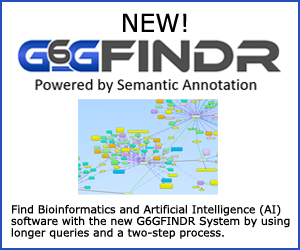Magnum Opus
Category Intelligent Software>Data Mining Systems/Tools
Abstract Magnum Opus is a data mining tool that delivers the power of the most recent advances in pattern discovery technology. It can be used to find new and unanticipated patterns from your data. Use Magnum Opus to unlock the wealth of information implicit within your data.
Magnum Opus employs unique 'k-optimal' (also known as 'top-k') pattern discovery techniques. Tell Magnum Opus what makes a pattern interesting to you and how many you would like. Magnum Opus delivers the patterns that are most interesting according to the measure that you select. Magnum Opus does all the hard work but lets you make all the decisions.
Magnum Opus will always deliver exactly the patterns that maximize the measure that you select, within whatever other constraints you choose. These further constraints include unrivalled facilities for detecting and discarding spurious 'discoveries'. Magnum Opus supports statistically sound pattern discovery.
Magnum Opus analyses data to detect 'rules' and 'itemsets' within the data.
The data is imported from a text file in one of several supported formats. Users typically extract data from a database into a text file in a suitable format. The data import process supports considerable flexibility in the formats that may be employed.
Once the data is imported into Magnum Opus, the user selects settings to control a search for rules and itemsets in the data. The user can choose between five (5) 'measures' of the importance of a rule, leverage, lift, strength, coverage, or support. Two (2) measures, leverage and coverage are available for itemsets. The user also specifies the maximum number of rules or itemsets to be found, and can place restrictions on those to be considered.
A search is then conducted. Within the restrictions specified by the user, Magnum Opus finds the rules or itemsets with the highest values on the specified measure. Magnum Opus will only find fewer than the specified number of rules or itemsets if the search is terminated by the user or there are fewer than the specified number that satisfy the user specified constraints.
The rules and itemsets found are recorded in an output file and may optionally be exported to a comma separated value (CSV) file suitable for input into a spreadsheet for further analysis.
Products features/capabilities include:
1) Magnum Opus is easy to use and does Not presume advanced knowledge of statistics or machine learning.
2) Magnum Opus patterns are expressed in forms that are simple to understand.
3) Magnum Opus includes a unique facility to automatically filter out spurious 'discoveries'.
4) Unlike some other pattern discovery systems, Magnum Opus does Not rely on sparse data for efficient processing.
5) Magnum Opus finds patterns from both transaction data and attribute- value data.
6) Magnum Opus has been designed to analyze substantial databases containing millions of records.
7) Magnum Opus is fast. It has linear compute time. If the amount of data is doubled then the compute time will approximately double.
8) Magnum Opus is flexible. The different search options support a wide range of differing analytic objectives.
In addition to its commercial applications, Magnum Opus is used by scientists in a range of disciplines. The following papers describe some of the scientific applications of Magnum Opus. Contact manufacturer for additional scientific papers.
1) Irena I. Artamonova, Goar Frishman, Mikhail S. Gelfand, and Dmitrij Frishman (2005) Mining sequence annotation databanks for association patterns. Bioinformatics, 21: 49-57.
2) Jie Chen, Hongxing He, Huidong Jin, Damien McAullay, Graham Williams, and Chris Kelman, (2006) Identifying Risk Groups Associated with Colorectal Cancer, Lecture Notes in Computer Science, Volume 3755, Pages 260 - 272.
3) E. Georgii, L. Richter, U. Ruckert, and S. Kramer (2005) Analyzing microarray data using quantitative association rules. Bioinformatics 21: 123-129.
4) Hei-Chia Wang, Yi-Shiun Lee and Tian-Hsiang Huang (2006) Gene Relation Finding Through Mining Microarray Data and Literature. In Transactions on Computational Systems Biology V, Springer: Berlin, pp. 83-96.
5) George Dimitoglou and Shmuel Rotenstreich (2007) A System for Association Rule Discovery in Emergency Response Data. In Tarek Sobh (Ed.) Innovations and Advanced Techniques in Computer and Information Sciences and Engineering, Springer: Netherlands, pp. 193- 199.
System Requirements
Operating System
- Windows 2000/Xp/Vista Linux Solaris 2.5+
Hardware Platform
- PC, PC, SPARC
Executable
- 32-bit, 32-bit or 64-bit (AMD64/EM64T) 32-bit
Manufacturer
- GI Webb & Associates
- 2/26 Strathconnan Place
- Wheelers Hill, Vic., 3150
- Australia
- Phone: +61 409 805607
- E-mail: support@giwebb.com
Manufacturer Web Site Magnum Opus
Price Windows General License $900 USD, upgrade $450 USD. Linux General License $1400 USD, upgrade $700 USD.
G6G Abstract Number 20164
G6G Manufacturer Number 102311




